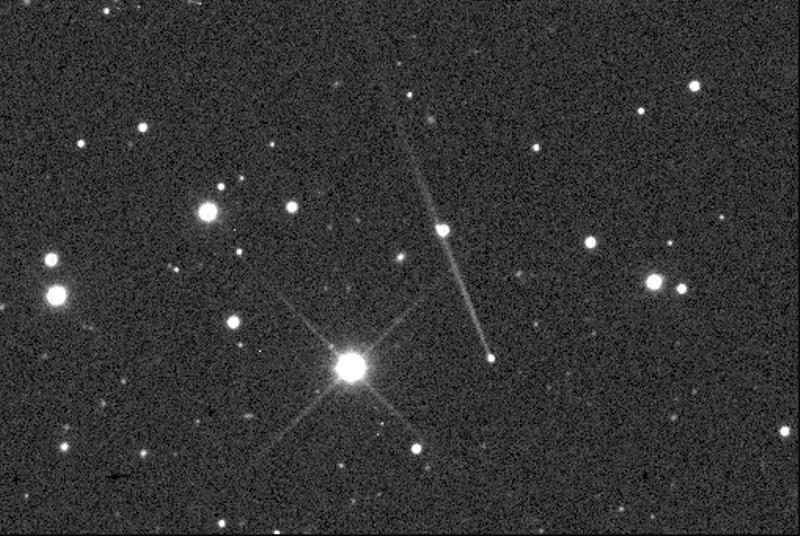The newly intriguing object is named Asteroid (6478) Gault, and observations from December and early January show it has developed a tail.
A notice sent to astronomers by the International Astronomical Union said that data from the observations is "consistent with the ejection of material or commencement of activity in early Nov. 2018."
British astronomer Alan Fitzsimmons noted on Twitter that the tail of dust extends over 400,000 km (249,000 miles).
"A possible scenario is that there was a collision between Gault and another object, releasing material into space, that we see like a tail/trail," astronomer Gianluca Masi said in a blog post for the Virtual Telescope Project, which managed to catch the object with its Italy-based telescope.
Comment: Yeah, technically it's possible, but what's more likely, given the multiple occasions in recent years now that we've seen 'asteroids' suddenly 'sprout comet-like tails', is that their charge potential relative to surrounding space and other solar bodies (not least the Sun) changes as it careens through the solar system. What this means, essentially, is that 'asteroids' are 'comets' and vice versa.
Masi and other astronomers plan to keep a close eye on the asteroid to see whether it's beginning a new life as a comet or will revert back to being just a regular rock drifting around the asteroid belt.
Although Gault is a rather large asteroid almost 2.3 miles (3.7 km) in diameter, it poses no threat to Earth, orbiting beyond Mars in the inner asteroid belt.




Comment: It IS a 'comet' because the only difference between an asteroid and a comet is that the latter is glowing from electrical discharge. See also: